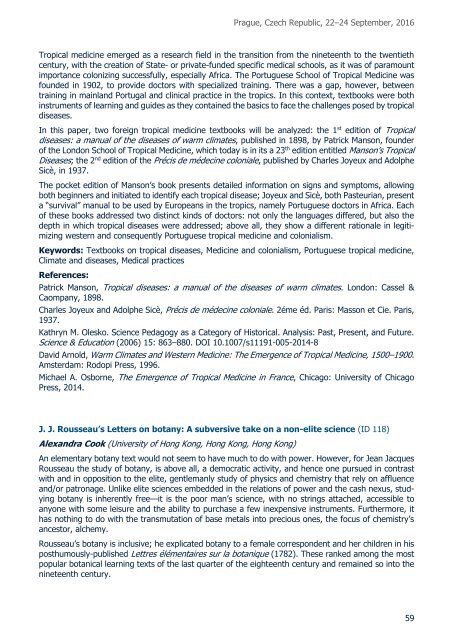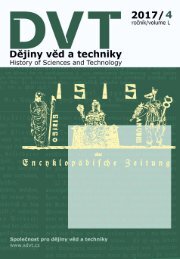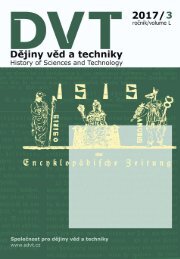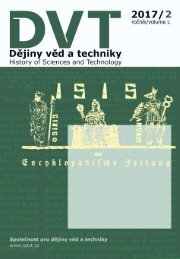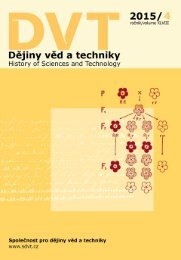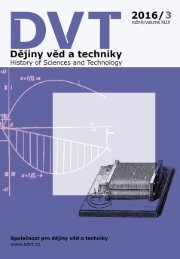7th ESHS Conference Prague 2016
7th Conference of the European Society for the History of Science Book of Abstracts
7th Conference of the European Society for the History of Science
Book of Abstracts
Create successful ePaper yourself
Turn your PDF publications into a flip-book with our unique Google optimized e-Paper software.
<strong>Prague</strong>, Czech Republic, 22–24 September, <strong>2016</strong><br />
Tropical medicine emerged as a research field in the transition from the nineteenth to the twentieth<br />
century, with the creation of State- or private-funded specific medical schools, as it was of paramount<br />
importance colonizing successfully, especially Africa. The Portuguese School of Tropical Medicine was<br />
founded in 1902, to provide doctors with specialized training. There was a gap, however, between<br />
training in mainland Portugal and clinical practice in the tropics. In this context, textbooks were both<br />
instruments of learning and guides as they contained the basics to face the challenges posed by tropical<br />
diseases.<br />
In this paper, two foreign tropical medicine textbooks will be analyzed: the 1 st edition of Tropical<br />
diseases: a manual of the diseases of warm climates, published in 1898, by Patrick Manson, founder<br />
of the London School of Tropical Medicine, which today is in its a 23 th edition entitled Manson’s Tropical<br />
Diseases; the 2 nd edition of the Précis de médecine coloniale, published by Charles Joyeux and Adolphe<br />
Sicè, in 1937.<br />
The pocket edition of Manson’s book presents detailed information on signs and symptoms, allowing<br />
both beginners and initiated to identify each tropical disease; Joyeux and Sicè, both Pasteurian, present<br />
a “survival” manual to be used by Europeans in the tropics, namely Portuguese doctors in Africa. Each<br />
of these books addressed two distinct kinds of doctors: not only the languages differed, but also the<br />
depth in which tropical diseases were addressed; above all, they show a different rationale in legitimizing<br />
western and consequently Portuguese tropical medicine and colonialism.<br />
Keywords: Textbooks on tropical diseases, Medicine and colonialism, Portuguese tropical medicine,<br />
Climate and diseases, Medical practices<br />
References:<br />
Patrick Manson, Tropical diseases: a manual of the diseases of warm climates. London: Cassel &<br />
Caompany, 1898.<br />
Charles Joyeux and Adolphe Sicè, Précis de médecine coloniale. 2éme éd. Paris: Masson et Cie. Paris,<br />
1937.<br />
Kathryn M. Olesko. Science Pedagogy as a Category of Historical. Analysis: Past, Present, and Future.<br />
Science & Education (2006) 15: 863–880. DOI 10.1007/s11191-005-2014-8<br />
David Arnold, Warm Climates and Western Medicine: The Emergence of Tropical Medicine, 1500–1900.<br />
Amsterdam: Rodopi Press, 1996.<br />
Michael A. Osborne, The Emergence of Tropical Medicine in France, Chicago: University of Chicago<br />
Press, 2014.<br />
J. J. Rousseau’s Letters on botany: A subversive take on a non-elite science (ID 118)<br />
Alexandra Cook (University of Hong Kong, Hong Kong, Hong Kong)<br />
An elementary botany text would not seem to have much to do with power. However, for Jean Jacques<br />
Rousseau the study of botany, is above all, a democratic activity, and hence one pursued in contrast<br />
with and in opposition to the elite, gentlemanly study of physics and chemistry that rely on affluence<br />
and/or patronage. Unlike elite sciences embedded in the relations of power and the cash nexus, studying<br />
botany is inherently free—it is the poor man’s science, with no strings attached, accessible to<br />
anyone with some leisure and the ability to purchase a few inexpensive instruments. Furthermore, it<br />
has nothing to do with the transmutation of base metals into precious ones, the focus of chemistry’s<br />
ancestor, alchemy.<br />
Rousseau’s botany is inclusive; he explicated botany to a female correspondent and her children in his<br />
posthumously-published Lettres élémentaires sur la botanique (1782). These ranked among the most<br />
popular botanical learning texts of the last quarter of the eighteenth century and remained so into the<br />
nineteenth century.<br />
59


